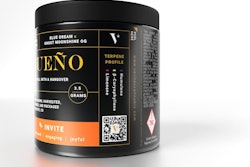Avoidance rests on compliance with federal regulations, which preempt state regulations if there is meaningful variance. The federal regulations are the Food, Drug, and Cosmetics Act (FDCA) and the Code of Federal Regulations Title 21 (21CFR §100.100). The FCDA establishes misleading fill levels as misbranding.
21CFR §100.100 defines slack-fill as the difference between a container’s capacity and its contents. 21CFR §100.100 further establishes misleading fill-levels as occurring when the container doesn’t allow a view of the contents and contains non-functional slack-fill. 21CFR §100.100 deems slack-fill as non-functional if it does not fall under any of six exemptions.
If the slack-fill in question offers product protection, is required by machinery, accounts for product settling, or performs a specific task, it’s exempted. Also, if the slack-fill in the container functions in product preparation, presentation, or is reusable; or if the brand is unable to increase contents or reduce container size, it’s exemtped.
Evaluating a company’s exposure to slack-fill lawsuits can be straightforward, much like a flowchart or a box-checking list. Does the packaging disallow a view of the contents? Is there slack-fill? Is the slack-fill non-functional? When all answers are, “Yes,” a company needs to decide on a course of action.
One course of action is not to do anything at all. The risk of such a decision is product specific. For example, a company might regard an established brand with a history of repeat purchases as prima facie evidence that consumers are not being misled by alleged slack-fill.
Affirmatively, however, a company can choose corrective measures. Here, too, product-specific considerations should be considered. The objective should be to achieve compliance and to cost-effectively minimize or eliminate legal exposure.
What is the best way to allow a view of the contents, for example? Switching from an opaque container to a clear one, although seductively suggestive, might be costly and disruptive from an operations standpoint. If the container is made of opaque plastic, a clear fill-strip might suffice. A paperboard carton might have its deficiency corrected with a display window.
Whether misleadingly or not, packaging communicates through its size. While size matters, another means of communication is text, which can serve in lieu of dimensional changes. Text can be used to state such particulars as quantity, count, net weight, and serving size. It should be done prominently and unambiguously, imposing no burden on the consumer to calculate and convert. Another communication feature is graphics, useful for those products that lend themselves to being depicted as, “actual size.” Text and graphics can explain and counter what might otherwise be regarded as misleading, non-functional slack-fill. That’s literally the case with packaging that states something to the effect of, “Some settling of the contents might have occurred during distribution.”
All of the preceding discussion notwithstanding, slack-fill considerations should not be a stand alone component of packaging management. Yes, slack-fill considerations can prompt varying degrees of package redesign, but they also should be a factor in new package design. With food and beverage, especially, packaging professionals are aware of regulations governing product-packaging interactions and the like. Because the increase in slack-fill lawsuits is of recent vintage, however, they’re likely less top-of-mind. That needs to change.
Packaging management involves trade-offs among the competing, sometimes conflicting interests of other disciplines. The discipline most implicitly, if not explicitly invoked in slack-fill lawsuits is marketing. Slack-fill lawsuits, in the main, allege that the packaging, as a marketing tool, is being used misleadingly, denying the consumer the opportunity to make an informed decision. It follows, therefore, that packaging and marketing (along with legal) should collaborate in crafting a proactive approach to slack-fill lawsuits.
Lacking an intent to mislead does not shield a company from slack-fill lawsuits. An example is the oft-utilized promotion of offering a stated-percent bonus quantity. When the bonus quantity comes in the same size container as that of the traditional quantity, it might give credence to an allegation that the difference between the two quantities equates to non-functional slack-fill.
And while packaging and other disciplines are at it, they should broaden their concerns to include other company practices that might be regarded as misleading, even if they are not illegal. One such practice is the de facto price increase [sometimes called “shrinkflation”] achieved by keeping the packaging the same size but reducing the contents. At press time, there’s talk of a possible recession (more on page 34). That’s a scenario that makes overt price increases risky. Even if a de facto price increase doesn’t produce slack-fill large enough to trigger lawsuits, the practice won’t go unnoticed by those who are vigilant about such matters
Lastly, does a clear plastic beverage bottle, sporting a reasonable fill-height, have a place in a discussion about slack-fill lawsuits? Yes, given that the bottle has a convex bottom that reduces capacity while giving the impression of fullness. Who’s to say, in these litigious times, that practice someday won’t be the subject of a lawsuit? PW
Sterling Anthony, CPP, is a consultant specializing in marketing, packaging, logistics, and ergonomics. 100 Renaissance Center-Box 176, Detroit, MI 48243; 313/531-1875; [email protected].




























